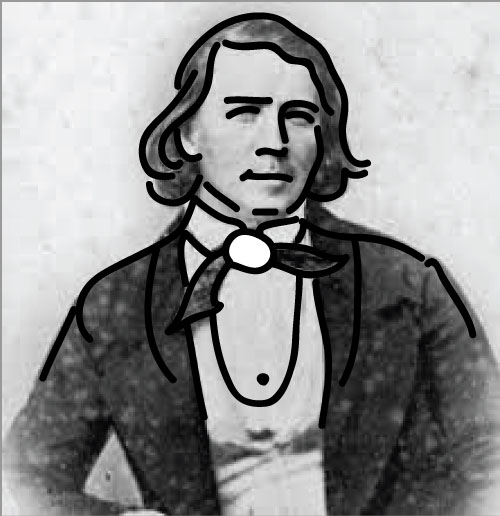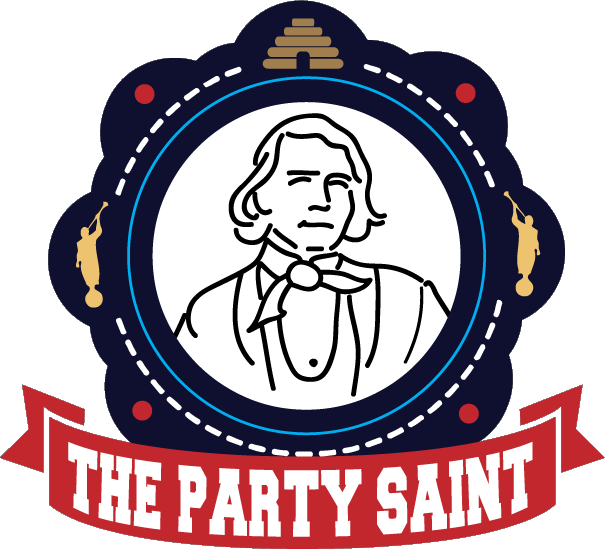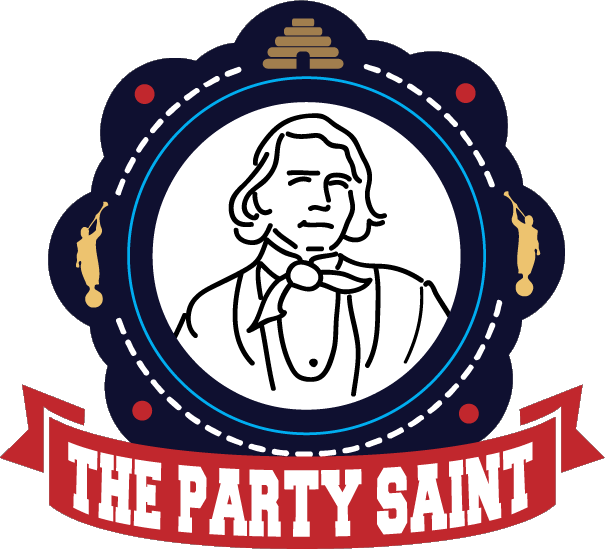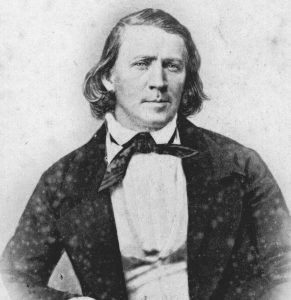Who is The Party Saint?
This website is named after the Original Party Saint, Brigham Young! Brigham believed that wholesome recreation was essential to the health of the community: “Now we are met in the capacity of a social community—for what? That our minds may rest, and our bodies receive that recreation which is proper and necessary to keep up an equilibrium, to promote healthy action to the whole system (Discourses of Brigham Young, 240).” He encouraged resting and recreation while saints traveled across the plains, and used public and tithe monies to build places where Utahns could dance and sing and view the theater. He believed “To make ourselves happy is incorporated in the great design of man’s existence.” (DBY, 236), and wholesome recreation was an important part of man’s search for happiness in this life and beyond.
Raised a Puritan(1), Brigham Young had not been taught to be a lover of dance and music:
“I had not a chance to dance . . . and never heard the enchanting tones of the violin, until I was eleven years of age; and then I thought I was on the high way to hell, if I suffered myself to linger and listen to it. I shall not subject my little children to such a course of unnatural training, but they shall go to the dance, study music, read novels, and do anything else that will tend to expand their frames, add fire to their spirits, improve their minds, and make them feel free, and untrammeled in body and mind”.
Brigham Young, “Discourse,” Deseret News, 20 July 1854, 65
Later in life Brigham learned to believe differently about recreation than he had been taught, encouraging the saints to participate often in church-sponsored recreation, including theatrical performances and music:
I built [the] theater to attract the young of our community and to provide amusement for the boys and girls, rather than have them running all over creation for recreation. Long before [it] was built I said to the Bishops, “Get up your parties and pleasure grounds to amuse the people” (DBY, 243).
However, Brigham clearly taught that these activities, while essential to well-being, are not part of our worship:
I want it distinctly understood, that fiddling and dancing are no part of our worship. The question may be asked, What are they for, then? I answer, that my body may keep pace with my mind. My mind labors like a man logging, all the time; and this is the reason why I am fond of these pastimes—they give me a privilege to throw everything off, and shake myself, that my body may exercise, and my mind rest. What for? To get strength, and be renewed and quickened, and enlivened, and animated, so that my mind may not wear out (DBY, 242).
Brigham knew that recreation can be turned to evil, so he gave the Saints some advice:
Upon the stage of a theater can be represented in character, evil and its consequences, good and its happy results and rewards; the weakness and the follies of man, the magnanimity of virtue and the greatness of truth. The stage can be made to aid the pulpit in impressing upon the minds of a community an enlightened sense of a virtuous life, also a proper horror of the enormity of sin and a just dread of its consequences. The path of sin with its thorns and pitfalls, its gins and snares can be revealed, and how to shun it (DBY, 243).
If you wish to dance, dance; and you are just as much prepared for a prayer meeting after dancing as ever you were, if you are Saints. If you desire to ask God for anything, you are as well prepared to do so in the dance as in any other place, if you are Saints (DBY, 243).
[However,] those who cannot serve God with a pure heart in the dance should not dance (DBY, 243).
He probably would have approved of Church basketball:
If you want to dance, run a foot race, … or play at ball, do it, and exercise your bodies, and let your minds rest (DBY, 243).
The Party Saint Logo
So, in honor of Brigham Young and the long Latter-day Saint tradition of pursuing wholesome recreation, I made this site logo, based on this image of Brigham Young in his thirties.

I think Briggy looks like Oscar Wilde in this picture.
And here is the finished image, with some homage to traditional Brigham-esque themes like the Beehive and Angel Moroni. The style is Americana.

Where did these activities come from?
Activities on this site are from my old web site, MormonShare.com, which I abandoned in 2018 when President Nelson asked us to stop using the name Mormon in our church use. I collected them from activities I attended and from ideas others shared with me over 15 years and shared them online at that website. Many of these activities will be fun for members of other faiths, too, and I hope that many people will find them useful.
Notes
1 –https://archive.org/stream/HistoryOfJOHNYOUNGAndABIGAILHOWE/History+of+JOHN+YOUNG+and+ABIGAIL+HOWE_djvu.txt – “The childhood of the Young children were marked by plain living and high thinking. The daily routine of the family followed the pattern of their Puritan forbearers. The father was strict to sternness. Brigham has said, ‘It was a word and a blow with my father, but the blow came first.’ To listen to the fiddle, to laugh or shout on the Sabbath Day was a fault unforgiveable. But the mother’s tact and sympathy mellowed the sternness of the father and encircled childish deed and faults with tender solicitude. “
DBY quotes are from https://www.lds.org/manual/teachings-brigham-young/chapter-26?lang=eng

